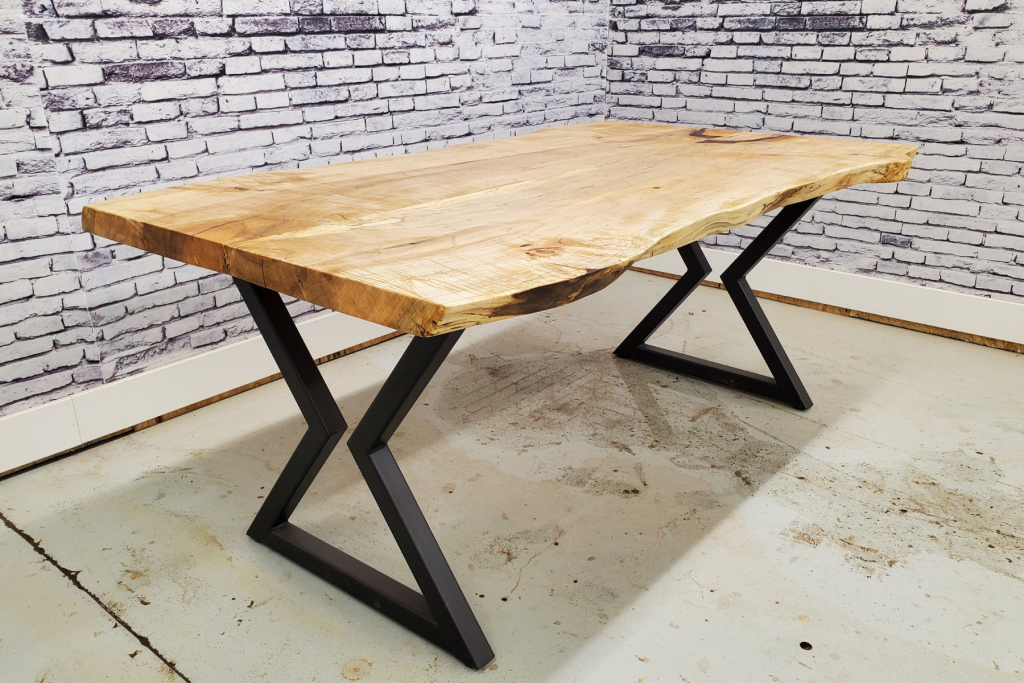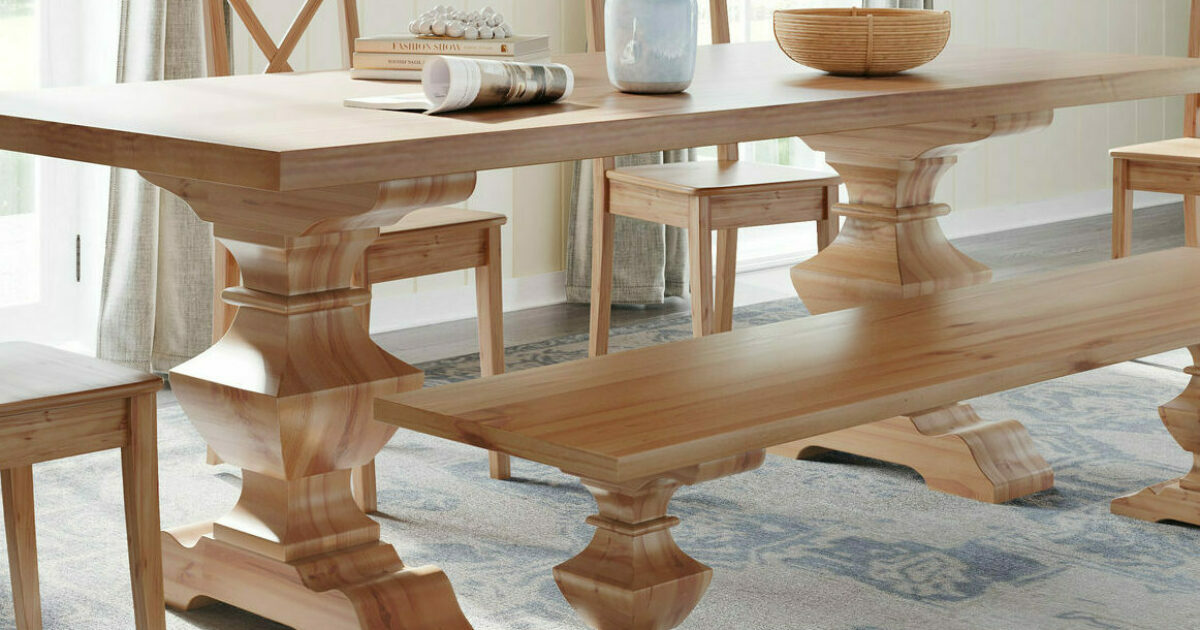Add a Rustic Touch to Your Table with Standard Dining Table Legs Wood
Add a Rustic Touch to Your Table with Standard Dining Table Legs Wood
Blog Article
Checking Out the Various Sorts Of Table Legs Timber for Your Eating Space
The selection of eating table legs wood can exceptionally influence both the useful and aesthetic top qualities of your eating room. Solid wood alternatives, such as oak and walnut, offer a timeless appearance with unmatched longevity, while engineered wood options use cutting-edge designs that imitate the richness of natural grains.
Strong Timber Options

In addition, strong wood is renowned for its toughness and durability. Unlike engineered products, strong timber is much less prone to warping and damages with time when properly maintained. This makes it a suitable selection for families or those who often hold celebrations. Each item of strong timber is unique, showcasing individual qualities that include in the appeal and personality of the eating table.
Furthermore, strong timber can be ended up in countless means, varying from all-natural oils to discolored surfaces, enabling home owners to individualize their furnishings to match their decor. In recap, choosing solid timber for eating table legs not only guarantees structural honesty yet likewise improves the visual allure of the eating area, making it a worthwhile financial investment for any kind of home.
Engineered Wood Alternatives

Plywood, created from numerous layers of timber veneer, is steady and specifically solid, making it a superb option for dining table legs. Its split structure allows it to hold up against modifications in humidity and temperature level better than typical strong wood. MDF, on the various other hand, provides a smooth surface area for painting or veneering, enabling designers to achieve a sleek look while maintaining structural honesty.
Particleboard, often made use of in budget-friendly alternatives, offers decent toughness and is lightweight, making it less complicated to deal with. It may not be as long lasting as plywood or MDF. It is necessary to consider the designated usage and desired visual when picking engineered wood choices. These materials not only improve the capability of eating spaces however additionally allow for greater layout adaptability, guaranteeing that conventional and contemporary designs can exist side-by-side sympathetically.
Reclaimed Wood Features
Recovered wood provides a distinct blend of sustainability and character, making it an increasingly popular choice for eating table legs. Sourced from old barns, manufacturing facilities, and various other frameworks, reclaimed timber symbolizes click to read a history that new products merely can not duplicate. Each piece carries its very own tale, marked by distinct blemishes, knots, and differing grain patterns, which contribute to a table's distinct visual allure.
Along with its visual charm, redeemed timber is an ecologically friendly alternative. By repurposing formerly utilized materials, it reduces the need for new lumber, thus aiding to preserve forests and decrease waste. This straightens with a growing customer preference for sustainable techniques in home furnishings.
Furthermore, recovered wood is often more long lasting than recently collected wood due to its age. The all-natural drying procedure that recovered wood undertakes cause a denser and more powerful material, making it much less vulnerable to bending and splitting. This improves the long life of dining tables, permitting them to endure the roughness of everyday usage.
Softwood vs. Hardwood
When choosing eating table legs, comprehending the distinctions between softwood and wood is essential for attaining both aesthetic and useful goals. Softwoods, originated from coniferous trees, such as pine and cedar, are identified by their lighter weight and ease of adjustment. They usually show a more rustic look, making them suitable for country-style or informal eating spaces. Softwoods are typically less resilient than woods, which can be a consideration for families or those looking for long life in their furnishings.
On the other hand, woods, sourced from deciduous trees like maple, cherry, and oak, are renowned for their thickness, toughness, and durability. The elaborate grain patterns and rich colors of woods supply a innovative and ageless allure, making them suitable for official eating settings. While hardwoods tend my response to be more expensive and larger, their strength against wear and tear frequently validates the investment.
Ultimately, the selection in between softwood and wood for dining table legs should straighten with your style vision, usage requirements, and budget, making sure that your eating room shows your personal design while staying functional over time.

Surfaces and Therapies
The aesthetic charm and durability of dining table legs can be considerably enhanced through various finishes and treatments. These procedures not just shield the timber from damage however also elevate its look, permitting it to enhance varied interior styles.
One usual therapy is tarnishing, which passes through the timber and improves its natural grain while including shade. Spots offer an abundant, elegant appearance, making it possible for house owners to match their furniture with existing decor. Conversely, clear coatings such as polyurethane or varnish produce a protective layer without modifying the timber's original tone, making sure toughness versus wear and tear.
Additionally, all-natural oils, like tung or linseed oil, nourish the timber and use a subtle luster, all while being environment-friendly. These oils enable the surface area to breathe, preventing dampness buildup and possible warping.
For those looking for a rustic appeal, weathered or troubled finishes can be put on develop an aged look, including character to the item. Ultimately, the option of therapies and surfaces relies on personal choice, preferred aesthetic appeals, and the specific timber type, making it important to think about these variables when choosing i thought about this table legs for your space.
Verdict
To conclude, the selection of dining table leg materials substantially affects both the aesthetic and practical aspects of an eating room. Solid woods, crafted choices, and reclaimed options each offer distinctive benefits, accommodating various preferences and demands. Understanding the differences between woods and softwoods, along with suitable surfaces and therapies, enables informed decision-making. Eventually, the option of timber kind should line up with wanted design, resilience, and environmental factors to consider, boosting the total dining experience.
The selection of eating table legs timber can greatly affect both the visual and practical top qualities of your eating area - Dining Table Legs Wood. Solid wood options, such as oak and walnut, provide a classic appearance with unparalleled durability, while engineered timber options use ingenious designs that mimic the splendor of all-natural grains. Solid timber supplies an ageless high quality that can elevate the total layout of an eating space. Each piece of strong timber is special, showcasing private characteristics that include to the beauty and personality of the dining table
Additionally, reclaimed wood is typically extra sturdy than freshly gathered timber due to its age.
Report this page